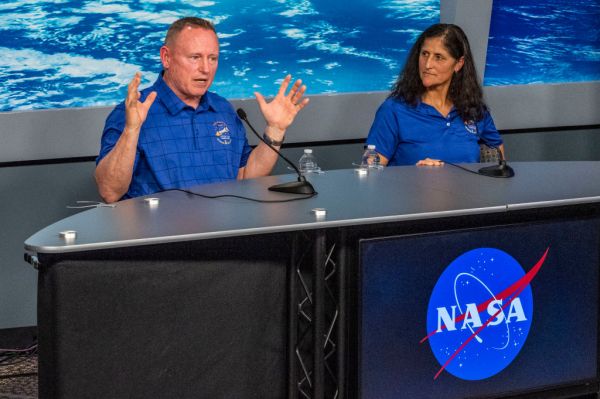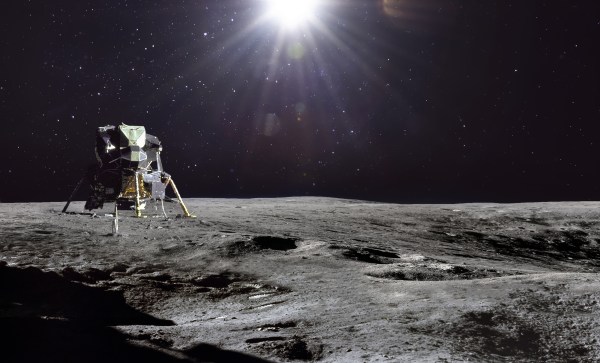Happy Thursday! A bakery owner in New Hampshire took to the courts after a local zoning board ordered him to take down a painting of giant pastries adorning his business. The owner has insisted the mural is art, while the zoning officer deemed it an advertisement.
This might not be the stuff of landmark Supreme Court cases, but let it be known that if the Advisory Opinions crew decides to do some on-the-ground reporting on this, we like eclairs.
Quick Hits: Today’s Top Stories
- Hamas returned the bodies of four murdered hostages to Israel on Thursday as part of the U.S.-brokered ceasefire deal. The group was said to include Oded Lifshitz, Shiri Bibas, and her two young sons, Ariel and Kfir. The children’s father, Yarden Bibas, was kidnapped separately and released alive earlier this month. After being handed over by the Red Cross, the bodies were transferred to a forensic institute for final identification. A group of six living hostages is scheduled to be released on Saturday.
- President Donald Trump and Ukrainian President Volodymyr Zelenksy traded barbs Wednesday as the U.S. negotiates with Russia on an end to the war in Ukraine. Trump described Zelensky as a “dictator without elections,” while the Ukrainian leader accused Trump of amplifying Russian disinformation. The exchange followed the start of high-level talks between U.S. and Russian officials in Saudi Arabia aimed at ending Russia’s war with Ukraine, though Zelensky said his country had been excluded from the meetings. Russian President Vladimir Putin, meanwhile, praised the “very friendly” atmosphere of the negotiations and the American officials in attendance. “On the American side, there were completely different people who were open to the negotiation process without any bias, without any condemnation of what was done in the past,” he said.
- Defense Secretary Pete Hegseth directed the Pentagon to draw up plans to slash the defense spending by $50 billion—roughly 8 percent of the military’s budget—in each of the next five years, multiple outlets reported Wednesday.* The order, which Hegseth detailed in a Tuesday memo first obtained by the Washington Post, included exemptions for U.S.-Mexico border security, nuclear weapons modernization, and missile defense—a priority of the Trump administration as it seeks to develop an “Iron Dome” air defense system to cover the United States. The proposal for the cuts comes as Republican lawmakers say they want to boost military spending.
- The 9th U.S. Circuit Court of Appeals on Wednesday left in place a lower court’s hold on the implementation of President Trump’s executive order to restrict birthright citizenship. The ruling—which followed a request by the Department of Justice to stop the lower court’s block from taking effect—marked the first time an appellate court has weighed in on the administration’s effort to end birthright citizenship for children born to parents in the U.S. illegally or temporarily. The case now looks poised to make its way to the Supreme Court, as opponents of the order argue it runs afoul of the 14th Amendment.
- Trump issued an executive order on Wednesday aimed at stopping federal funds from reaching recipients who are in the United States illegally. The directive, part of the administration’s immigration crackdown, calls on federal agencies and departments to “identify all federally funded programs” providing benefits to illegal immigrants and “take corrective action.” It’s not immediately clear which programs will be affected by the order, as illegal immigrants are currently ineligible for most welfare payments.
- The Senate voted 52-46 on Wednesday to confirm Kelly Loeffler as head of the Small Business Administration, with Democratic Sen. Jacky Rosen of Nevada joining Republicans in support of her bid. Loeffler—a businesswoman and Trump loyalist—briefly represented Georgia in the Senate after being appointed by Republican Gov. Brian Kemp in 2020 to fill a vacant seat, but lost her reelection campaign to Democratic Sen. Raphael Warnock after a runoff in January 2021. She will now be tasked with overseeing the agency that provides “counseling, capital, and contracting expertise” to small businesses.
To Mars or the Moon, That Is the Question

As headlines focus on the Trump administration’s efforts to overhaul federal agencies, one change has flown under the radar. The lunar rock from the Apollo missions—displayed in the Oval Office since 2021—has quietly been sent back to NASA.
The move may be remembered as a fitting symbol of the administration’s approach to American spaceflight, as Trump’s allies push him to forgo the moon to focus on Mars. But doing so would risk upending a costly lunar exploration program launched by Trump himself and giving China an edge as it seeks to put its own astronauts on the moon.
Trump launched the Artemis program in 2018 with the goal of putting humans back on the moon by 2024. Although the deadline has come and gone, the key motivator behind the initiative remains: competition with China. “A big driver for Artemis, in addition to just science and exploration, was … China’s intention to put Chinese astronauts on the moon,” Clayton Swope, a senior fellow at the Center for Strategic and International Studies, told TMD. “You have a moon race 2.0, effectively.”
The stakes of the new space race are not as high as the first one, revolving less around national security and more around demonstrating technological prowess and capability. But like the Cold War-era competition, the U.S. looks on track to win. The new U.S. goal is to put astronauts on the moon by 2027 and set up a base on the moon’s south pole—a region believed to contain water ice and that humans have never reached. China plans to do the same by 2030.
But the gap between China and the U.S. may be closing. More than six years after its creation, the Artemis program has been delayed multiple times—astronauts are not expected to orbit around the moon until 2026—and has gone severely over budget, costing an estimated $93 billion through 2025. “That is a good chunk of the NASA budget every year right now,” Swope said. “It’s costing more money than people would want and definitely taking more time than people would want.”
Many of the program’s problems stem from Boeing’s Space Launch System (SLS), Artemis’ primary launch vehicle for cargo and crew. The rocket uses more advanced technology than the space shuttle in preparation for eventual Mars missions, but it is expected to cost nearly $24 billion and has only flown once in 2022 in an unmanned orbit around the moon, five years behind schedule. The system costs $2.5 billion per launch, making it significantly pricier than SpaceX’s Starship, which can reach comparable distances at just $100 million per launch. Artemis also requires several ships to fuel the SpaceX landing system, Dan Hart, a nonresident senior fellow with the Atlantic Council’s GeoTech Center, told TMD. “The last time we went to the moon … it was one launch.”*
Boeing is in a precarious position, particularly after a recent botched flight to the International Space Station. It’s been more than eight months since a Boeing Starliner spacecraft malfunctioned on a mission to the ISS, leaving two astronauts stuck on the station for much longer than the eight days they expected. The pair will finally head home in just a few weeks—but, this time, on a SpaceX vehicle. Boeing announced in early February that it was expecting to lay off 400 employees from its SLS team by April, citing “revisions to the Artemis program”—an ominous sign for the future of SLS development. And on Wednesday, four senior officials involved in Artemis announced their plans to resign from NASA.
More broadly, it’s unclear whether the federal agency will be able to sidestep the Trump team’s efforts to dramatically reduce the federal workforce. Elon Musk’s Department of Government Efficiency (DOGE) arrived at NASA last week with reported plans to cut more than 1,000 probationary workers, but it unexpectedly delayed the firings—at least temporarily—sparing the agency from layoffs that have affected thousands across the federal government.
Instead of gutting it, the administration may move to redirect the agency’s focus. Jared Isaacman, Trump’s nominee to head NASA and the commander of a 2021 SpaceX flight, has long been critical of the emphasis on Artemis. “It is particularly disheartening to witness billions of taxpayer dollars funneled into [SLS] and not one but two lunar landing contracts,” he wrote last year in a letter to then-NASA Administrator Bill Nelson. Meanwhile, Musk—as head of both SpaceX and DOGE—has been very clear about where he thinks NASA’s priorities should lie. “We’re going straight to Mars,” Musk said on X in January. “The Moon is a distraction.”
Musk has long advocated for putting humans on Mars, and his enthusiasm seems to have spread to Trump. “We will pursue our manifest destiny into the stars, launching American astronauts to plant the Stars and Stripes on the planet Mars,” Trump said in his inaugural address. He didn’t mention the moon, despite Artemis being a key initiative in his first administration. SpaceX would likely be a key NASA partner in reaching Mars, raising concerns over Musk’s conflict of interest as DOGE’s point man. His businesses already have a combined $20 billion in contracts with the U.S. government.
But SpaceX’s growing dominance in the government-sponsored space exploration predates Musk’s foothold in the Oval Office. “NASA depends on SpaceX now. It has nothing to do with the election of President Trump or any role that Elon Musk has,” Swope said. NASA relies on SpaceX for launch capabilities, the transportation of cargo and astronauts to the space station, and even key Artemis architecture for the system that will bring astronauts to the surface of the moon. “That relationship developed over a long time, arguably before 2010,” Swope added.
Musk has said that SpaceX plans to launch five Starship rockets to Mars by 2026, and if those go well, then the first crewed missions are set to begin in 2028. But putting humans on the red planet in that timeline is an ambitious feat, particularly as NASA remains focused primarily on Artemis. The agency is planning a Mars Sample Return (MSR) program with the European Space Agency to retrieve samples collected by rovers, but it has faced major setbacks, including NASA estimates that the mission could come with an $8-11 billion price tag—more than double the initial budget—just to retrieve samples by 2040. Meanwhile, China has moved up its timeline for retrieving Mars samples, planning for a launch in 2028.
However, if NASA shifts its focus to missions to Mars, there might be an opportunity for significant collaboration between the private sector and the federal government. “Clearly there’s interest from Elon Musk and SpaceX to do something to help get people to Mars,” Swope said. If the government were to redirect its resources to a Mars landing, “the shared goal [could] really bring out the best in NASA [and] the private sector.”
But a pivot away from the moon and toward Mars presents its own set of challenges. “There would be a fair amount of that money that’s been spent on going to the moon that would be wasted if we change course,” Hart said. It could even snowball into another Artemis, over budget and behind schedule.
“The pieces that are going to take us to the moon are not coming together easily,” Hart added. “And Mars is harder.”
Worth Your Time
- For all of its media attention, what has Elon Musk’s DOGE actually accomplished over the last month? Not nearly as much as it claims, Jane C. Timm reported for NBC News. “A series of announcements by DOGE as well as claims by Musk and President Donald Trump about the agency’s efforts have crumbled under scrutiny even as they’re broadly repeated by conservative pundits, sympathetic media and the White House. Two of the most notable claims — around Social Security fraud and $8 billion savings found in a Department of Homeland Security contract — have been debunked. Meanwhile, Trump’s agenda is set to add to the federal government’s deficit well in excess of what DOGE is cutting. ‘It’s amateur hour in their federal government,’ said Martin O’Malley, the former Maryland governor who ran the Social Security Administration under President Joe Biden,” Timm wrote. “DOGE’s cuts, as illustrated through the ‘receipts’ posted online Monday, run the gamut across the U.S. government, albeit they appear to hew particularly to Trump’s politics — particularly opposition to diversity initiatives and media outlets. The more than 1,000 listed cuts represent a fraction of the $55 billion in savings DOGE says it has achieved in about a month of work, according to its website. The list includes a hodgepodge of canceled media subscriptions, contracts and leases, and quite a few noticeable errors.”
- In a feature for History Today, Vaughn Scribner told the story of a key combatant in the American Revolutionary War: nature. “Although their enemies were ostensibly the American rebels, over the following eight years many of the foreign troops would come to see their military foes as just one of the New World’s many hostile forces. The American environment – its physical terrain, flora, fauna, weather, climate, and diseases – proved hugely detrimental to their physical and mental health,” he wrote. “In the accounts of the European soldiers who endured the Revolutionary War, America’s vast swamplands recur as a particular source of misery. In October 1779 Lieutenant John Enys found the hardships of marching through New York’s ‘Great Swamp’ ‘impossible to conceive’. While Enys considered the swamps of New York ‘disagreeable’ and ‘uncertain’, he was relatively lucky: his comrades stationed in the war’s southern theatre (comprising Virginia, Georgia, the Carolinas, and Florida) encountered far larger, more dangerous swamps, where the natural dangers were exacerbated by the presence of rebel foes who knew how to use the environs for their own benefit. The American soldier Francis Marion became known as the ‘Swamp Fox’ due to his ability to wage guerrilla warfare against the British forces during their invasion of the Carolinas in 1780 and 1781.”
Presented Without Comment
Politico: Trump Blindsides Staff, Congress With Conflicting Medicaid Messages
On Wednesday, the White House appeared to add a new wrinkle by indicating Trump may also be open to altering elements of Medicare — the popular health care program for older Americans he’s repeatedly promised to preserve.
“The Trump administration is committed to protecting Medicare and Medicaid while slashing the waste, fraud, and abuse within those programs — reforms that will increase efficiency and improve care for beneficiaries,” White House spokesperson Kush Desai said in an initial statement to POLITICO.
But after this article was published, Desai sent an updated statement that omitted the mention of Medicare, instead saying only that the administration sought to protect Medicaid “while slashing the waste, fraud and abuse within the program.”
Also Presented Without Comment
BBC: Trump Calls Zelensky ‘Dictator’ as Rift Between Two Leaders Deepens
Also Also Presented Without Comment
New York Times: ‘Long Live the King’: Trump Likens Himself to Royalty on Truth Social
In the Zeitgeist
The third season of HBO’s White Lotus premiered over the weekend to somewhat mixed reviews. Resorts on the Thai island of Ko Samui are already bracing for the “White Lotus effect,” wherein tourists flood the dark comedy’s scenic locales with each new season. We can’t help but wonder if fans actually watch until the end before booking their flights.
Toeing the Company Line
- In the newsletters: Scott Lincicome unpacked the many problems with the Trump administration’s plan for “reciprocal tariffs,” Nick Catoggio argued that Donald Trump is making the U.S. one of the bad guys in the Russia-Ukraine war, and Jonah Goldberg reflected on the Trump team’s contradictory foreign policy thus far.
- On the podcasts: On Advisory Opinions, Sarah Isgur and David French talk to commentator David Lat about the Department of Justice dropping its case against New York City Mayor Eric Adams. Filling the host’s chair on The Remnant, Sarah talks with author Caroline Criado-Perez about her book Invisible Women: Data Bias in a World Designed for Men.
- On the site: Steve Hayes—yes, that Steve Hayes—reports on the ways in which DOGE is really just bait and switch when it comes to cutting federal spending, and Charles Hilu writes about the tough position the Trump administration’s tough-on-Ukraine stance is putting GOP senators in.
Let Us Know
Should the U.S. prioritize Mars or the moon?
Clarification, February 21, 2025: A sentence in this newsletter was tweaked to make clear that Artemis requires several ships to fuel the SpaceX landing system.
Correction, February 21, 2025: The order detailed in a memo obtained by the Washington Post outlined $50 billion in cuts to defense spending in each of the next five years, not in total over the next five years.












Please note that we at The Dispatch hold ourselves, our work, and our commenters to a higher standard than other places on the internet. We welcome comments that foster genuine debate or discussion—including comments critical of us or our work—but responses that include ad hominem attacks on fellow Dispatch members or are intended to stoke fear and anger may be moderated.
With your membership, you only have the ability to comment on The Morning Dispatch articles. Consider upgrading to join the conversation everywhere.